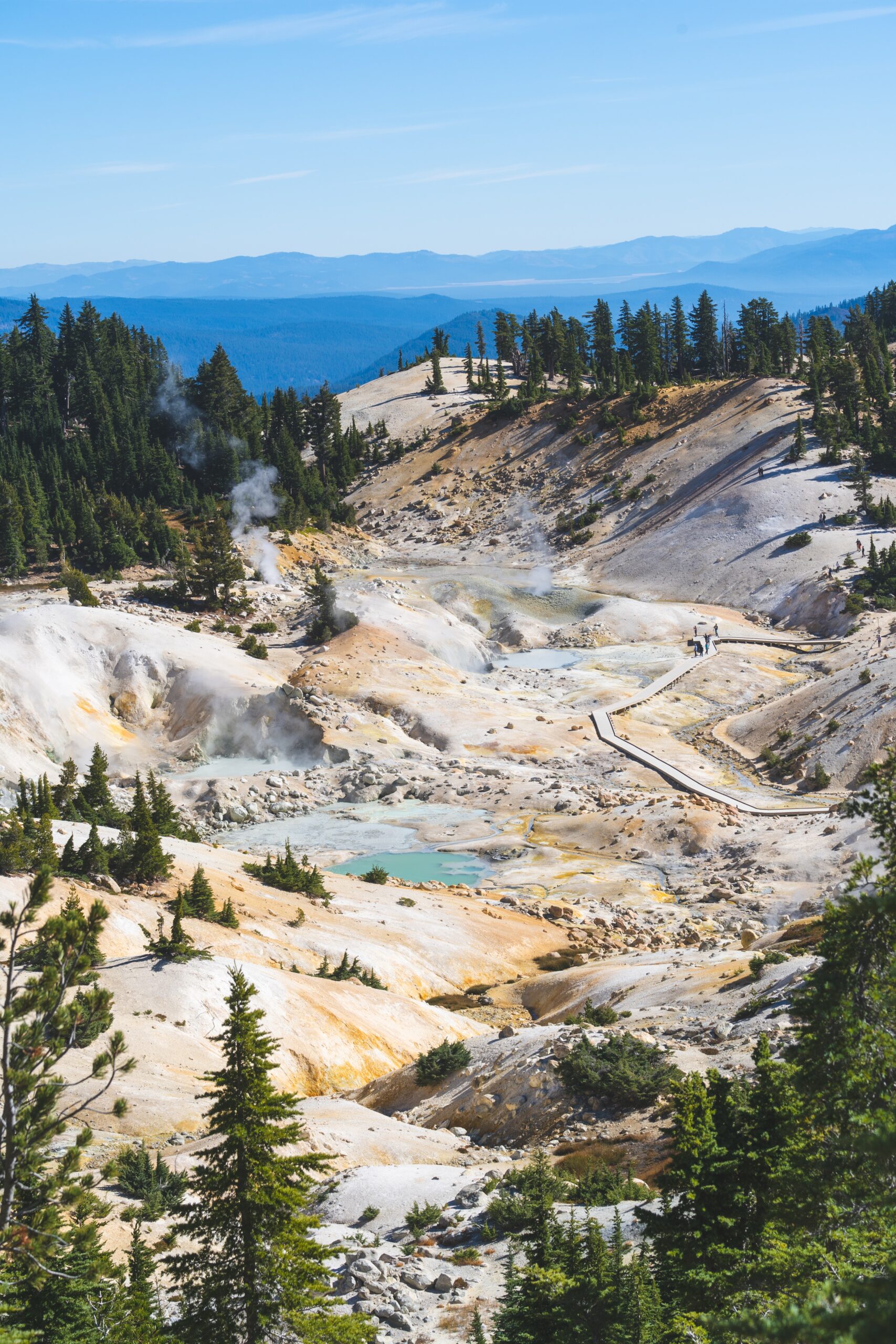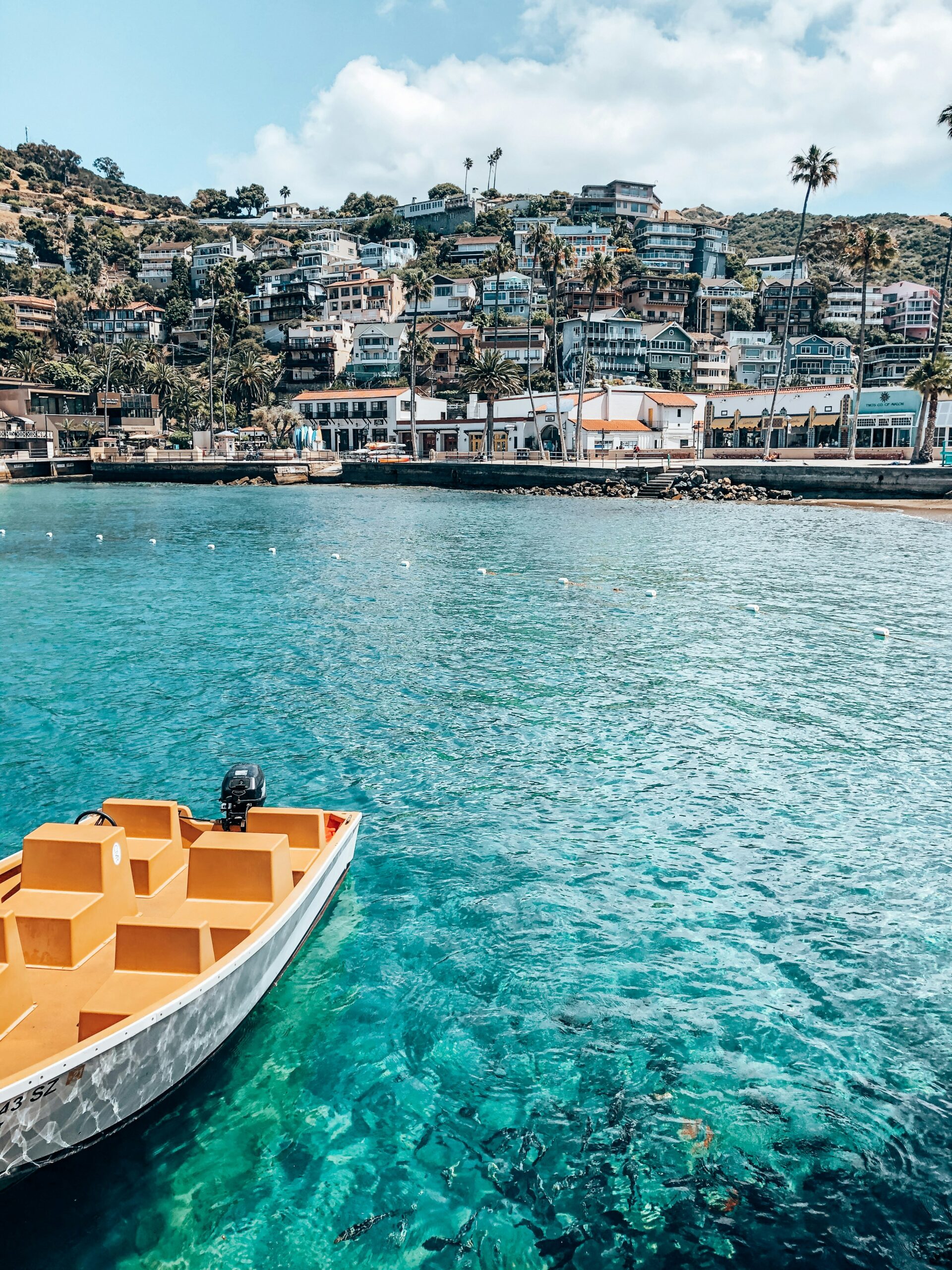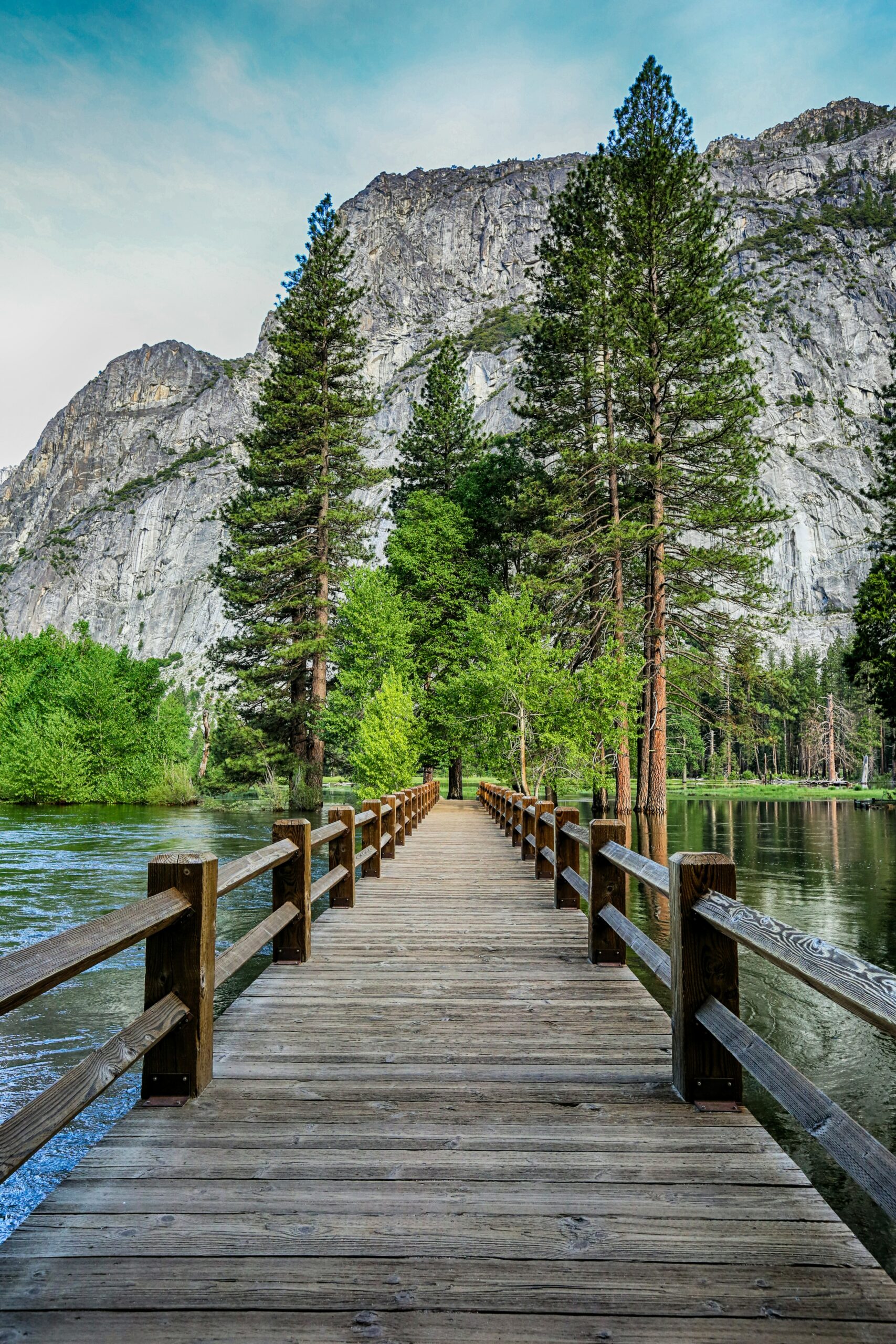Lassen Volcanic National Park: A Friendly Guide to Exploring the Park’s Natural Wonders
Welcome to Lassen Volcanic National Park, a stunning destination located in northeastern California. This national park is home to a diverse and dynamic landscape, where steaming fumaroles, clear mountain lakes, and volcanoes meet. With over 160 miles of hiking trails, Lassen Volcanic National Park is a hiker's paradise, offering a range of trails for all skill levels.
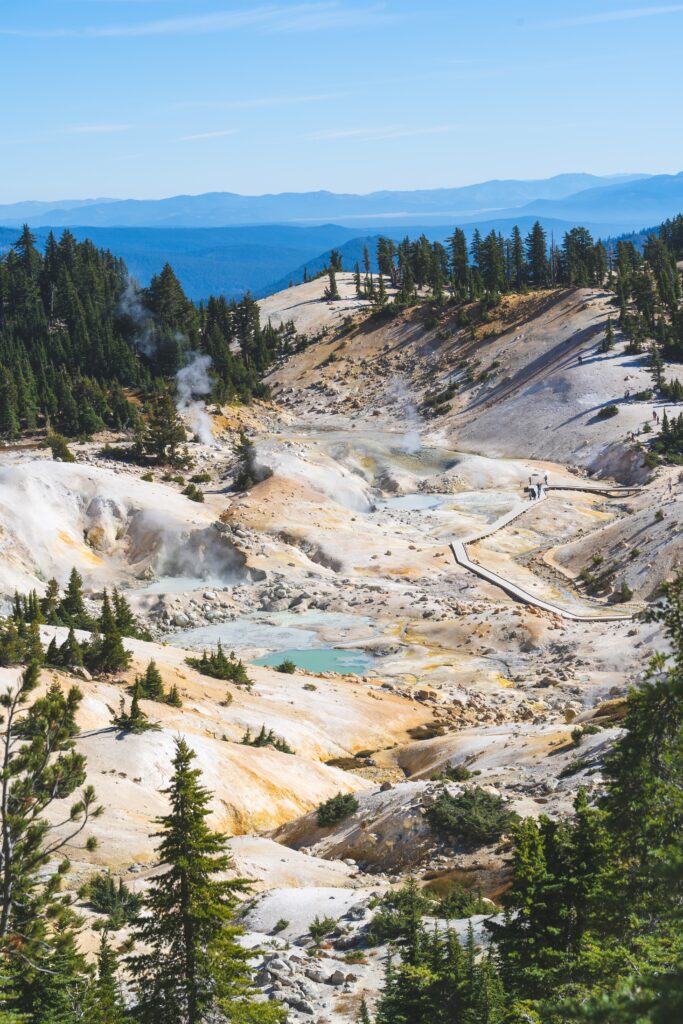
Lassen Volcanic National Park is the perfect place to explore the great outdoors and immerse yourself in nature. The park is known for its hydrothermal features, including boiling springs, splattering mud pots, and steaming sulphur vents. The park's signature volcano, Lassen Peak, is the largest plug dome volcano in the world and the southernmost volcano in the Cascade Range. The peak last erupted in 1917 and remains a popular destination for visitors to the park.
As a national park, Lassen Volcanic National Park is dedicated to preserving its natural resources and providing visitors with an unforgettable experience. Whether you are interested in hiking, camping, or simply taking in the stunning scenery, there is something for everyone at Lassen Volcanic National Park. So pack your bags, grab your hiking boots, and get ready to explore this incredible destination.
Lassen Volcanic National Park: A Friendly Guide to Exploring the Park's Natural Wonders
History and Designation
Lassen Volcanic National Park is a unique and fascinating destination that offers visitors a glimpse into the geological history of the region. The park has a rich history that dates back to the early 1900s, when it was first recognized as a site of national significance. In this section, we will explore the history and designation of Lassen Volcanic National Park.
Early Recognition
The history of Lassen Volcanic National Park dates back to 1907 when President Theodore Roosevelt designated two separate areas as national monuments. These two areas were Cinder Cone National Monument and Lassen Peak National Monument. These two areas were jointly designated as Lassen Volcanic National Park on August 9, 1916. The park was the fifteenth national park established in the United States.
National Park Establishment
The establishment of Lassen Volcanic National Park was due to the efforts of several individuals and organizations. One of the most influential was B.F. Loomis, who was a local businessman and conservationist. Loomis worked tirelessly to promote the area's natural beauty and geologic significance. His efforts paid off, and in 1907, President Roosevelt designated the two national monuments that would eventually become Lassen Volcanic National Park.
The park was officially established on August 9, 1916, and it has been a popular destination for visitors ever since. Today, the park is home to a variety of geologic features, including lava beds, hot springs, and mud pots. Visitors can also explore the park's rich cultural history, which includes the Native American tribes that have lived in the area for thousands of years.
In conclusion, the history and designation of Lassen Volcanic National Park is an important part of its identity. The park's unique geology and cultural history have made it a popular destination for visitors from around the world. Whether you are a first-time visitor or a seasoned veteran, Lassen Volcanic National Park is a must-see destination that is sure to leave a lasting impression.
Geological Features
Lassen Volcanic National Park is known for its stunning geological features, shaped by volcanic activity over thousands of years. The park is home to a variety of volcanic landscapes, hydrothermal areas, and notable peaks that are worth exploring.
Volcanic Landscape
The park contains four types of volcanoes: composite, shield, cinder cone, and plug dome volcanoes. These volcanoes are known for their unique shapes and eruption patterns. The volcanic landscape is characterized by jagged peaks, lava flows, and pyroclastic flows.
Hydrothermal Areas
Lassen Volcanic National Park is also home to several hydrothermal areas, including Bumpass Hell and Sulphur Works. These areas feature hot springs, mud pots, and fumaroles that emit steam and gas. Visitors can take a walk on the boardwalks and observe the colorful mineral deposits and unique geothermal features.
Lassen Peak
Lassen Peak is the largest plug dome volcano in the world and is one of the most iconic features of the park. It last erupted in 1915 and created a new crater on the mountain's summit. Visitors can hike to the summit of Lassen Peak and enjoy panoramic views of the surrounding landscape.
Cinder Cone
Cinder Cone is another notable feature of the park. It is a cinder cone volcano that last erupted approximately 350 years ago. The cone rises 750 feet above the surrounding landscape and offers visitors a unique perspective of the park's volcanic features.
In addition to these features, the park also boasts a variety of other volcanic and hydrothermal features, including hot springs, mud pots, and geysers. Exploring the geological wonders of Lassen Volcanic National Park is an unforgettable experience that you won't want to miss.
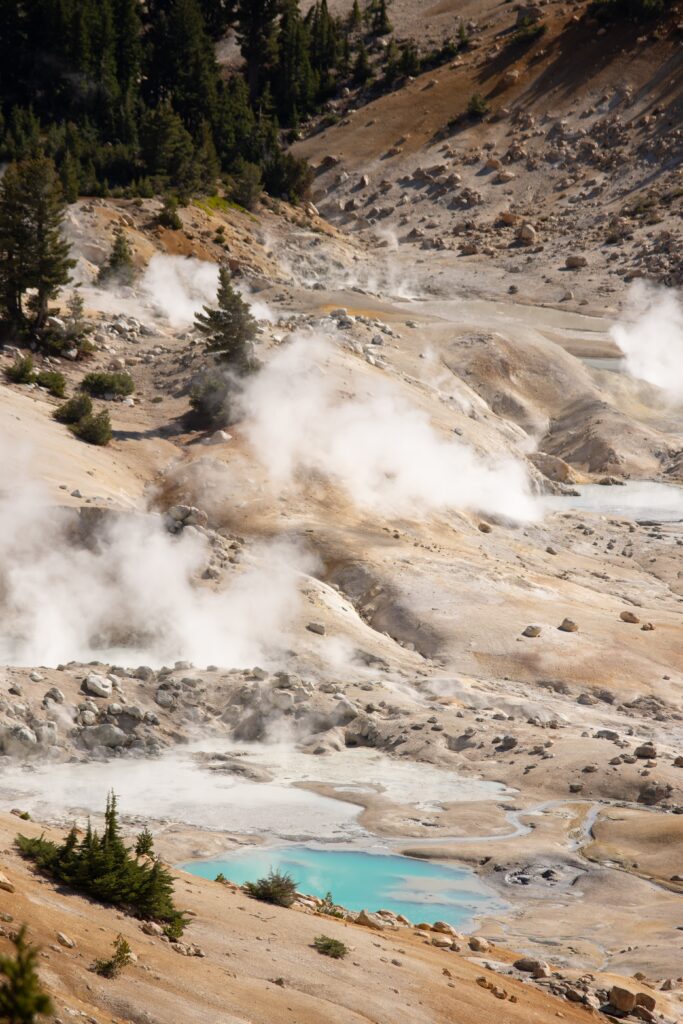
Ecology and Wildlife
Lassen Volcanic National Park is home to diverse flora and fauna. The park's ecosystem is characterized by steaming fumaroles, meadows freckled with wildflowers, clear mountain lakes, and numerous volcanoes. The park's jagged peaks tell the story of its eruptive past while hot water continues to shape the land.
Flora
Lassen Volcanic National Park's flora is diverse and includes a variety of wildflowers and meadows. The park's meadows are dotted with a variety of wildflowers, including lupines, paintbrushes, and lilies. The park's wildflowers bloom from late spring to early fall, creating a colorful landscape. The park's meadows are also home to a variety of grasses and sedges.
Fauna
Lassen Volcanic National Park is home to a variety of wildlife, including deer and black bears. The park's deer population is most active during the summer months when they are frequently seen grazing in the park's meadows. The park's black bear population is also active during the summer months when they are known to forage for food.
The park's wildlife is also diverse and includes a variety of birds, such as the Clark's nutcracker and the mountain bluebird. The park's lakes and streams are home to a variety of fish, including rainbow trout and brook trout.
Overall, Lassen Volcanic National Park's ecosystem is a delicate balance of flora and fauna. The park's wildflowers and meadows provide a habitat for a variety of wildlife, including deer and black bears. The park's diverse ecosystem is a testament to the power of nature and the importance of preserving our natural resources.
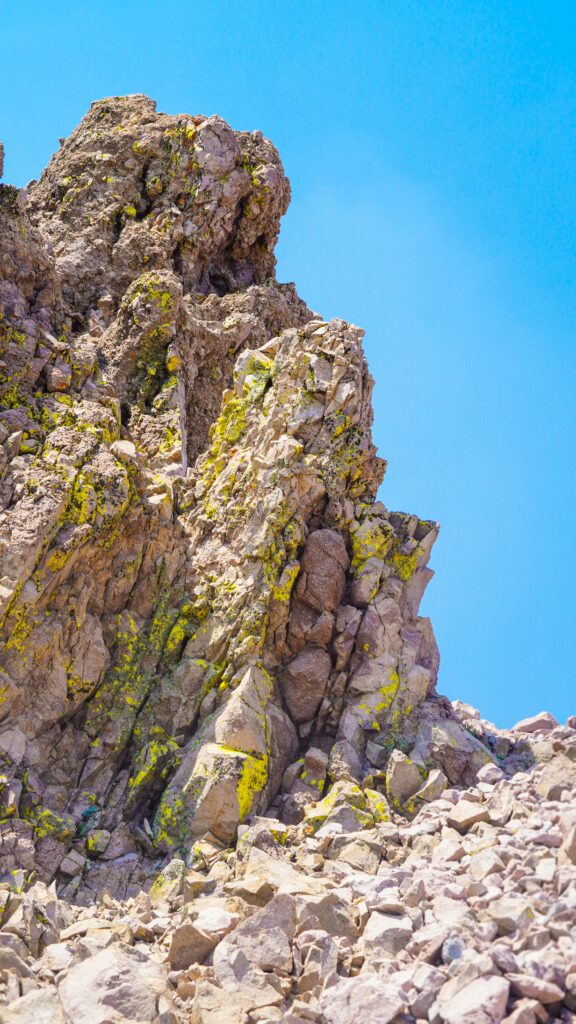
Recreational Activities
Lassen Volcanic National Park is a great place to enjoy a variety of recreational activities. From hiking and camping to winter sports, there's something for everyone. Here are some of the most popular activities:
Hiking and Trails
If you enjoy hiking, Lassen Volcanic National Park has plenty of trails to choose from. The park has over 150 miles of hiking trails, ranging from easy walks to challenging hikes. Some of the most popular hikes include Bumpass Hell, Cinder Cone, and Lassen Peak. You can also enjoy scenic hikes around Manzanita Lake. Make sure to bring plenty of water and snacks, wear comfortable shoes, and check the weather forecast before heading out.
Camping and Lodging
If you want to stay overnight, Lassen Volcanic National Park has several campgrounds and lodges to choose from. The park has eight campgrounds, including Manzanita Lake, Summit Lake, and Butte Lake. You can also stay at the Drakesbad Guest Ranch, which offers cabins, meals, and horseback riding. Make sure to reserve your spot in advance, especially during peak season.
Winter Sports
During the winter months, Lassen Volcanic National Park transforms into a winter wonderland. You can enjoy snowshoe hikes, cross-country skiing, and other winter sports. The park offers ranger-led snowshoe hikes, which are a great way to explore the park in the winter. You can also rent snowshoes and cross-country skis from the park's visitor center. Make sure to dress warmly and bring plenty of water and snacks.
Whether you're looking for a day hike or a week-long camping trip, Lassen Volcanic National Park has something for everyone. Make sure to plan ahead, follow park rules and regulations, and leave no trace. Enjoy your time in this beautiful park!
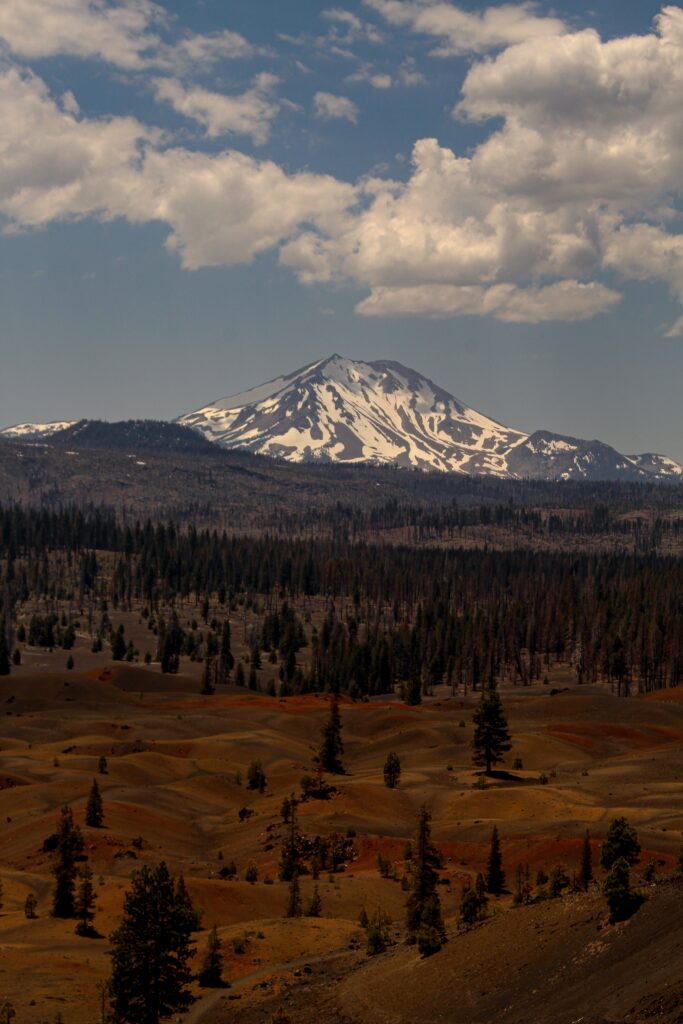
Visitor Information
Planning a trip to Lassen Volcanic National Park? Here's what you need to know before you go.
Accessibility
Lassen Volcanic National Park has a variety of accessible facilities and services available for visitors with disabilities. The park offers accessible trails, campsites, restrooms, and picnic areas. The Kohm Yah-mah-nee Visitor Center also has an accessible entrance, exhibits, and restrooms. For more information on accessibility in the park, visit the Visitor Centers page on the National Park Service website.
Safety and Regulations
Your safety is important at Lassen Volcanic National Park. Be aware of the park's regulations and guidelines, and stay up-to-date on current conditions. Always follow the Leave No Trace principles and practice good fire safety. Pets are allowed in the park but must be kept on a leash at all times. For more information on safety and regulations, visit the Safety and Regulations page on the National Park Service website.
Amenities and Services
Lassen Volcanic National Park has a variety of amenities and services available for visitors. The park has several campgrounds, including some that are open year-round. There are also picnic areas, hiking trails, and scenic drives. The Kohm Yah-mah-nee Visitor Center has exhibits, a bookstore, and a restaurant. For more information on amenities and services, visit the Plan Your Visit page on the National Park Service website.
If you plan to visit during the winter, be aware that some roads and facilities may be closed due to snow. Check the Current Conditions page on the National Park Service website for up-to-date information on road and trail conditions. Additionally, fees are required for entrance to the park. For more information on fees, visit the Fees & Passes page on the National Park Service website.
Whether you're looking to explore the park's volcanic landscape or simply enjoy the scenery, Lassen Volcanic National Park has something to offer for everyone.
Conservation Efforts
Lassen Volcanic National Park is committed to preserving the park's natural and cultural resources for future generations. The park's conservation efforts include wilderness protection and wildlife management.
Wilderness Protection
Lassen Volcanic National Park is home to the Lassen Volcanic Wilderness, which covers more than 27,000 acres of the park. The wilderness area is managed to preserve its natural character and provide opportunities for solitude and primitive recreation.
To protect the wilderness, the park has implemented a number of measures, including limiting group size, requiring permits for overnight camping, and prohibiting the use of motorized vehicles and bicycles. These measures help to minimize human impact on the wilderness and preserve the area's natural beauty.
Wildlife Management
Lassen Volcanic National Park is home to a diverse array of wildlife, including black bears, mountain lions, and coyotes. The park's wildlife management program is designed to protect these animals and their habitats while also ensuring visitor safety.
The park works closely with the Lassen National Forest and other agencies to manage wildlife populations and monitor their health. This includes conducting surveys to track the number and distribution of different species, as well as implementing measures to reduce human-wildlife conflicts.
In the aftermath of the Dixie Fire, which burned through much of the surrounding area, the park has been working to restore habitats and protect wildlife populations. This includes implementing measures to reduce erosion and sedimentation in waterways, as well as conducting surveys to monitor the health of wildlife populations in affected areas.
Overall, Lassen Volcanic National Park's conservation efforts are helping to protect the park's natural and cultural resources for future generations to enjoy.
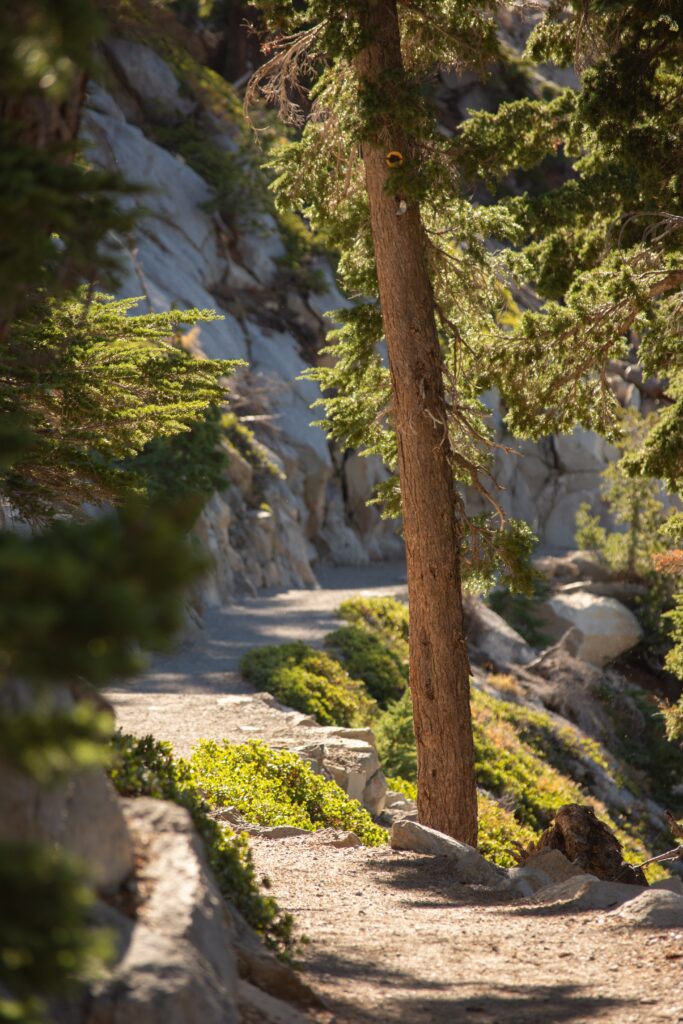
Cultural Significance
Lassen Volcanic National Park is not only a natural wonderland but also a place of great cultural significance. The park is home to several indigenous tribes that have lived in the area for thousands of years. The park also boasts historical landmarks that tell the story of the region's past.
Indigenous Heritage
The Atsugewi, Maidu, Yana, and Yahi are the four Native American tribes that once called the Lassen Volcanic National Park area home. These tribes have a rich cultural heritage and history. They were hunters and gatherers, who relied on the land for their survival. They had a deep respect for nature and believed that all living things were connected.
Today, the park is home to several cultural sites that are open to visitors. The Mountain Maidu people have a cultural center that showcases their history and traditions. The park also has several interpretive trails that highlight the indigenous heritage of the area. The trails are a great way to learn about the tribes that once lived in the region.
Historical Landmarks
The Loomis Museum is one of the most significant historical landmarks in the park. The museum was built in 1927 and tells the story of the region's past. The museum has exhibits on the indigenous tribes, the gold rush, and the history of the park. The museum is a great place to start if you want to learn about the history of the park.
Another historical landmark in the park is the Kohm Yah-mah-nee Visitor Center. The center has exhibits on the history of the park, the geology of the area, and the indigenous tribes. The center also has a bookstore where you can buy books on the history of the park.
In conclusion, Lassen Volcanic National Park is not only a natural wonderland but also a place of great cultural significance. The park has a rich history that dates back thousands of years. The park is home to several indigenous tribes and historical landmarks that tell the story of the region's past. The park is a great place to learn about the history and culture of the area.
Exploring the Park
Lassen Volcanic National Park is a vast expanse of natural beauty that offers a wide range of activities, from hiking to camping to guided tours. Here are some notable areas and tours to help you plan your visit:
Notable Areas
Bumpass Hell
One of the most popular attractions in Lassen Volcanic National Park is Bumpass Hell, a geothermal area that features steaming fumaroles, boiling mud pots, and hot springs. The Bumpass Hell Trail is a 3-mile round trip hike that takes you through this fascinating landscape. Make sure to wear sturdy shoes and bring plenty of water.
Warner Valley
Warner Valley is another must-see area in the park. It is home to Drakesbad Guest Ranch, a historic lodge that offers horseback riding, swimming, and other activities. The valley also features Boiling Springs Lake, a beautiful lake that is heated by geothermal activity.
Butte Lake
If you're looking for a more secluded area to explore, Butte Lake is a great choice. It is surrounded by forests and mountains and offers hiking trails, fishing, and camping. The Cinder Cone Trail is a popular hike that takes you to the top of a volcanic cone.
Juniper Lake
Juniper Lake is another beautiful and remote area of the park. It is a great place for swimming, kayaking, and fishing. The Juniper Lake Trail is a 6-mile round trip hike that takes you around the lake and offers stunning views of the surrounding mountains.
Devastated Area
The Devastated Area is a section of the park that was destroyed by a volcanic eruption in 1915. Today, it is a stark landscape of volcanic ash and rocks. The Devastated Area Interpretive Trail is a 1-mile loop trail that takes you through this unique area.
Sulphur Works
Sulphur Works is a hydrothermal area that features hissing fumaroles and bubbling mud pots. It is easily accessible from the park highway and is a great place to stop and take a short walk.
Guided Tours
If you're interested in learning more about the park's history and geology, there are several guided tours available:
- The Lassen Association offers guided hikes and walks led by knowledgeable volunteers.
- Drakesbad Guest Ranch offers guided horseback rides and hikes.
- The park also offers ranger-led tours and talks throughout the summer season.
Whether you prefer to explore on your own or with a guide, Lassen Volcanic National Park has something for everyone.
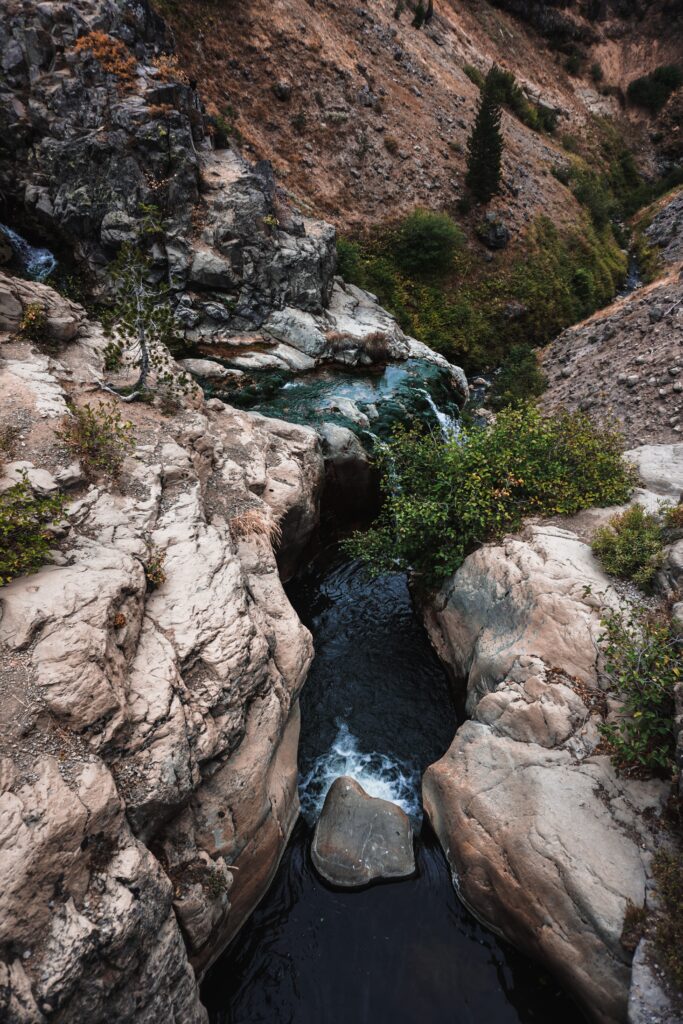
Natural Phenomena
Lassen Volcanic National Park is known for its unique natural phenomena that are a result of its volcanic past. Here, you can witness the beauty of nature in its raw form. Two of the most prominent natural features of the park are seasonal changes and geothermal activity.
Seasonal Changes
The park experiences four distinct seasons, each with its own unique charm. In the spring, the park comes to life with colorful wildflowers and gushing waterfalls. Summer brings warm days and cool nights, perfect for hiking and camping. Fall is a time of transition, as the leaves turn golden and crimson, and wildlife prepares for the winter. In the winter, the park is transformed into a winter wonderland, with snow-covered trees and frozen lakes.
Geothermal Activity
Lassen Volcanic National Park is home to a variety of geothermal features, including mud pots, fumaroles, hot water, boiling mud pots, hot springs, and sulfur vents. These features are a result of the volcanic activity in the area and are a testament to the power of nature.
Fumaroles are steam vents that release gases and steam into the air. They can be found throughout the park, and some of them are so hot that they can melt snow and ice. Mud pots are another geothermal feature that can be found in the park. They are pools of bubbling mud that are created by the interaction of hot water and volcanic ash.
Hot water is a common feature in the park, and it can be found in hot springs, boiling mud pots, and sulfur vents. Hot springs are pools of water that are heated by geothermal activity, while boiling mud pots are pools of mud that are heated by the same activity. Sulfur vents are openings in the ground that release sulfur gases.
In conclusion, Lassen Volcanic National Park is a unique and beautiful place that is home to a variety of natural phenomena. Whether you visit in the spring, summer, fall, or winter, you are sure to be amazed by the beauty of this park.
Related Post:
Surrounding Areas
When you visit Lassen Volcanic National Park, you'll be surrounded by beautiful natural scenery and charming local communities. Here are some nearby areas you might want to explore during your visit:
Local Communities
Redding is a nearby city that offers plenty of amenities for visitors. You can find restaurants, shops, and accommodations in Redding. It's also a great place to start your journey to Lassen Volcanic National Park. From Redding, you can take Highway 44 East to reach the park.
Red Bluff is another nearby community that's worth a visit. It's a small town with a historic downtown area that's worth exploring. You can also find restaurants and accommodations in Red Bluff.
Nearby Attractions
If you're looking for other places to visit during your trip to Lassen Volcanic National Park, there are plenty of nearby attractions to explore. Here are a few suggestions:
- Cascade Range: The Cascade Range is a mountain range that stretches from British Columbia to Northern California. Lassen Volcanic National Park is located in the southern part of the range. The Cascade Range is known for its beautiful scenery and outdoor recreation opportunities.
- Sierra Nevada: The Sierra Nevada is another nearby mountain range that's worth exploring. It's located to the west of Lassen Volcanic National Park and offers plenty of outdoor recreation opportunities, including hiking, camping, and skiing.
- Pacific Crest Trail: The Pacific Crest Trail is a long-distance hiking trail that stretches from Mexico to Canada. It passes through Lassen Volcanic National Park and offers plenty of opportunities for day hikes or multi-day backpacking trips.
Overall, there are plenty of nearby communities and attractions to explore during your trip to Lassen Volcanic National Park. Whether you're looking for outdoor recreation or urban amenities, you're sure to find something that fits your interests.
Related Post:
Frequently Asked Questions
What activities can visitors enjoy within Lassen Volcanic National Park?
Lassen Volcanic National Park offers a variety of activities for visitors of all ages and interests. Some popular activities include hiking, camping, fishing, birdwatching, and stargazing. The park has over 150 miles of hiking trails that range from easy walks to challenging hikes. Visitors can also enjoy scenic drives, ranger-led programs, and snowshoeing and cross-country skiing in the winter.
How can I find a map and navigate the trails in Lassen Volcanic National Park?
Maps of the park are available at the visitor centers and online. The park has a network of trails that are well-marked and maintained. Visitors are encouraged to stay on designated trails and carry a map and compass or GPS device. The park also offers guided hikes and ranger-led programs that provide information about the park's trails and natural features.
What are the camping options available in the park?
Lassen Volcanic National Park has eight campgrounds that offer a range of camping options, from primitive tent camping to RV camping with full hookups. Some campgrounds are first-come, first-served, while others can be reserved in advance. The park also has backcountry camping options for visitors who want to explore the park's wilderness areas.
What kind of weather should visitors expect throughout the year?
Lassen Volcanic National Park has a high elevation and a mountainous climate, which means that visitors can expect cool temperatures and variable weather throughout the year. Summers are generally mild, with temperatures ranging from the 50s to the 80s Fahrenheit. Winters are cold and snowy, with temperatures often dropping below freezing. Visitors should be prepared for sudden changes in weather and bring appropriate clothing and gear.
Can you share some historical facts about the park?
Lassen Volcanic National Park is home to Lassen Peak, which is one of the world's largest plug dome volcanoes. The park was established in 1916, making it one of the oldest national parks in the United States. The park's volcanic features, including hot springs, mud pots, and fumaroles, are a result of the park's location on the Pacific Ring of Fire.
Are there any volcanic features or lava flows visible to tourists?
Yes, visitors to Lassen Volcanic National Park can see a variety of volcanic features and lava flows. Some of the most popular sites include Bumpass Hell, a hydrothermal area with boiling mud pots and steam vents, and the Devastated Area, which was created by a volcanic eruption in 1915. Visitors can also see Lassen Peak, which last erupted in 1917 and is still considered an active volcano.

